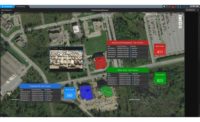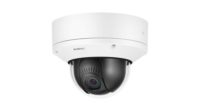The Emergence of 4K at ISC West
4K is making the leap from the consumer space to the security industry, bringing with it the promise of higher resolution, greater detail and better overall video.

It seemed that the biggest buzzword to come out of this year’s ISC West was 4K — just as it was the biggest buzzword to come out of the Consumer Electronics Show (CES) in 2012. Like 720p and 1080p before it, 4K is making the leap from the consumer space to the security industry, bringing with it the promise of higher resolution, greater detail and better overall video.
What is 4K? It is a generic term for resolution that contains approximately 4,000 horizontal pixels, offering four times the resolution of 1080p. Full ultra-HD is 33.2 megapixels, and ultra-HD is 8.3 megapixels.
That is what 4K means from a terminology standpoint. What it means to the security industry remains to be seen. However, there are a number of camera manufacturers who are betting on 4K and many more appear poised to do the same in the not-so-distant future.
Among those companies that announced their first 4K cameras at ISC West were Arecont Vision, Bosch Security, IQinVision, Sentry360, Sony, Axis Communications, and others. At least one additional manufacturer, DVTel, is knocking on the door with an entry into the 4K arena. Axis Communications made 4K its theme for this year’s ISC West.
“4K technology is the latest evolution in imaging technology,” described Sony Electronics in a prepared announcement regarding the company’s exhibit at ISC West. “It is a resolution four times higher than Full HD (1080p), which means it provides much more detail and better clarity than what can be seen on current HDTVs.
“For security professionals, this level of image detail means that video can be magnified and examined down to the slightest detail. In addition, 4K allows users to simultaneously monitor a large area and a specific object with a single camera. Users can also more effectively monitor entire scenes, as well as tiny movements in confined spaces such as exchanges at bank counters or gaming tables where attention to detail is important,” Sony stated.
Initially, at least, the majority of end users will rely on 1080p or HDTV monitors and displays to view video from their 4K cameras, which still will allow them to zoom in on and/or enhance specific areas of the video to view highly detailed images for forensic investigation.
One potential drawback could be infrastructure. As industry professionals learned from panelists who participated in “The Great Debate 2014” at ISC West, there are already vast numbers of installed sensors generating massive amount/s of data, all of which has to be transmitted somewhere for storage. Can networks, as we know them today, handle four times the resolution of 1080p? That is something that will need to be ironed out before 4K can truly take off, although there is hope that the coming H.265 compression standard will help with that.
There is also the question of lenses, which until now were incapable of handling such high resolution. That technology has caught up to cameras, as evidenced by all the 4K cameras and conversations at ISC West.
Several of the manufacturers showing those 4K cameras at the show are aware that there are still several factors that have to come together to form the ideal circumstances that will foster a 4K wave in the industry. However, as was the case with 1080p and 720p before it, that wave is coming — it’s just that no one can say when.
Looking for a reprint of this article?
From high-res PDFs to custom plaques, order your copy today!









